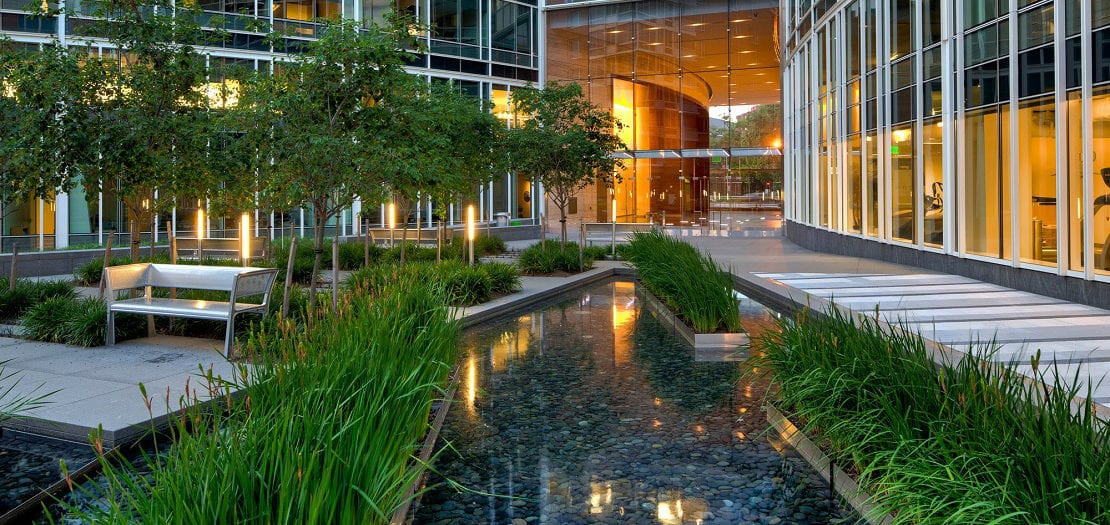Commercial real estate sustainability is a key focus of many businesses today. With the increased awareness and concern for environmental impact, organizations are looking to reduce their carbon footprint while improving overall efficiency.
In this blog post, we’ll discuss five strategies that can be implemented to improve sustainability in commercial real estate properties and reduce their environmental impact. From energy-efficiency measures such as LED lighting installations to waste management plans like composting initiatives, these solutions will help you create a more sustainable property without sacrificing your bottom line!
Learn how investing in commercial real estate sustainability now could lead to long-term savings down the road.
Table of Contents
How Energy Efficiency Impacts Commercial Real Estate Sustainability
Energy efficiency is an important factor in reducing environmental impact and improving sustainability in commercial real estate.
Utilizing renewable energy sources such as solar, wind, or geothermal can reduce the number of fossil fuels used to power a building.
Smart lighting systems that automatically dim lights when not needed or employ motion sensors to detect people in a room are also a great way to save energy.
Finally, upgrading HVAC systems with more efficient models can significantly lower the amount of electricity used for heating and cooling purposes.
By implementing these measures, commercial real estate owners can drastically reduce their carbon footprint while saving money on utility bills at the same time.
Next up is water conservation.
Water Conservation is Key to Commercial Real Estate Sustainability
Water conservation is an important part of reducing environmental impact in commercial real estate. By implementing water-saving strategies, businesses can reduce their utility bills and help protect the environment.
Install Low-Flow Fixtures and Appliances
Low-flow fixtures such as toilets, faucets, and showerheads are designed to use less water than traditional models while still providing the same level of performance. Installing these types of fixtures can significantly reduce a building’s water usage without sacrificing comfort or convenience to its tenants.
Additionally, low-flow appliances such as dishwashers and washing machines can also be installed in multifamily apartments to further reduce water consumption.
Harness the Power of The Rain
Rainwater harvesting systems capture rainwater from rooftops or other surfaces for reuse in nonpotable applications such as irrigation or toilet flushing. These systems allow businesses to take advantage of free natural resources instead of relying on municipal sources for their needs, which helps conserve precious drinking water supplies while saving money on utilities.
Recycle Greywater
Greywater recycling systems collect wastewater from sinks, showers, and laundry machines for use in nonpotable applications such as landscape irrigation or toilet flushing. This not only helps businesses save money but also preserves valuable freshwater resources.
Next, we’ll explore sustainable building materials.

(Source)
Sustainable Building Materials and Practices
Sustainable building materials and practices are essential for reducing environmental impact in commercial real estate.
Reclaimed or recycled building materials can be used to construct a variety of structures, from walls to furniture. These materials are often cheaper than new construction materials, making them an attractive option for businesses looking to reduce costs while still being environmentally conscious.
Low-VOC paints and finishes are also important when it comes to commercial real estate sustainability. VOCs (volatile organic compounds) have been linked to health issues such as asthma and other respiratory illnesses, so using low-VOC products is a great way to improve air quality indoors without sacrificing aesthetics.
Green roofs and walls can also help reduce environmental impact in commercial real estate by providing insulation that helps keep buildings cooler during hot summer months, reducing the need for energy-intensive air conditioning systems. Green roofs also provide a natural habitat for wildlife, helping increase biodiversity within urban areas while providing additional green space that can be enjoyed by people living nearby.
Additionally, green roofs absorb rainwater which helps prevent flooding during heavy storms while filtering pollutants out of the water before it reaches waterways downstream.
Waste Management Strategies for Commercial Real Estate Properties
Waste management is an important part of reducing environmental impact and improving sustainability in commercial real estate.
Establishing comprehensive recycling programs for tenants and employees can help reduce the amount of waste sent to landfills, while also providing educational opportunities about sustainable practices.
Recycling bins should be clearly labeled with instructions on what materials are accepted, as well as any other relevant information.
Additionally, it’s important to make sure that these bins are easily accessible throughout the property so that tenants and employees have no excuse not to participate in the program.
Composting programs can also help reduce food waste outputs from restaurants, cafeterias, and apartments which would otherwise end up in landfills where they create methane gas emissions. Composting facilities should be set up on-site or nearby so that organic materials can quickly be collected and processed into nutrient-rich soil amendments for community gardens or farms.
Finally, investing in high-quality furniture and appliances eliminates the need for frequent replacements due to wear and tear. This strategy will require a larger upfront investment but could save money long term. When buying products, look for those made with recycled materials instead of raw materials made from petroleum products.
Transportation Solutions for Commercial Real Estate Properties
Carpooling is a great way to reduce emissions from vehicles on the road. Encouraging carpooling among tenants and employees of commercial real estate properties can help significantly reduce the number of cars on the road.
Property owners should provide incentives such as discounted parking or free access to public transportation for those who participate in carpools.
Installing bike storage facilities is another transportation solution that encourages tenants and employees to use bicycles instead of cars when commuting to work or running errands around town. This not only reduces emissions but also provides people with a healthier form of exercise. Providing secure bike storage facilities helps ensure that bikes remain safe while parked at the property, thus encouraging more people to take advantage of this eco-friendly option.
Investing in electric vehicle charging stations helps promote the EV sector. Tenants and employees who own electric vehicles will now have easy access to charging capabilities without having to search for external sources elsewhere. Encouraging people to switch out their diesel engines for an electric motors further reduces emissions from traffic congestion around commercial real estate properties.
Conclusion
Commercial real estate sustainability is an important issue that needs to be addressed. Property owners and managers should take steps to reduce their environmental impact by implementing energy efficiency measures, water conservation strategies, sustainable building materials and practices, waste management solutions, and eco-friendly transportation solutions. By taking these proactive steps towards commercial real estate sustainability today, we can help ensure a better tomorrow for our planet.
It’s time to take action and make commercial real estate more sustainable.





